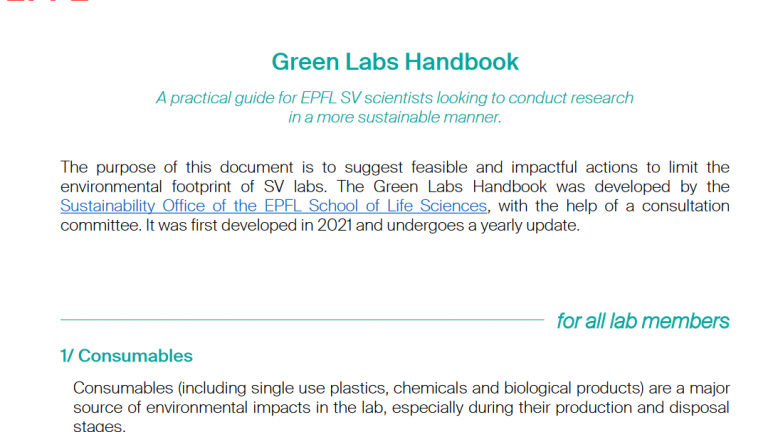 Concerned products
Concerned products
- Measuring instruments (spectrometers, multimeters, etc.)
- Observation instruments (imagers, seismographs, spectroscopes, microscopes, etc.)
- Lab equipment (centrifuges, refrigerators, freezers, autoclaves, etc.)
 Best practices
Best practices
- Question the need before buying scientific equipment. Define the functions that the equipment must have (excess equipment = excess environmental impact!)
- Take into account the following criteria:
- Features and performances
- Energy consumption
- Origin of equipment
- Capacity (over- or under-dimensioning)
- Related consumables
- Lifespan (warrantee, availability of spare parts)
- Look up pooling options with technology platforms or other labs
- Choose to lease rather than purchase
- Consider the purchase of second-hand equipment
- Consult EPFL’s SESAME platform for the exchange of equipment (only accessible with an EPFL IP address)
- Avoid / delay the purchase of new equipment thanks to proper use of existing equipment
- Ensure the users of the scientific equipment are properly trained
- Switch off equipment as often as possible to save electricity. Avoid leaving equipment in standby mode whenever possible
- Carry out preventive maintenance. (Properly maintained device = 30% increase in lifespan)
- Contact your faculty’s workshop as soon as the equipment is malfunctioning or breaking down
- Take inspiration from the Green Labs Handbook developed by SV Sustainability
 Environmental impacts
Environmental impacts
Raw materials
- Potential loss of biodiversity, as well as loss of habitats and harmful consequences for plants, animals, and people
- Pollution of waters and soils
- Consumption of finite resources
Manufacturing and use
- Greenhouse gas and air pollutant emissions due to the use of energy from fossil fuels
Transport
- Manufacturing usually takes place abroad. Transport, not only to the place of consumption but also between the different stages of the supply chain, generates greenhouse gas emissions that contribute to human-induced climate change
Disposal
- Improper disposal of products represents an enormous impact on the environment. In addition, if waste is not recycled, precious resources can be lost, jeopardizing recovery
- Different materials within the same equipment make recycling more difficult
 Social impacts
Social impacts
Extraction of raw materials and manufacturing
- Serious violations of human rights (child labor, modern slavery, rights of indigenous people, etc.)
- Violations of human rights (freedom of association, freedom of expression, etc.)
- Health and safety at work
 Health impacts
Health impacts
- Harmful emissions, for example those of volatile organic solvents such as xylene and toluene, carcinogenic preservatives, or allergenic azo dyes can contribute to air pollution at the workplace


